Not long ago, in my last post here, I explained how I had modified the design of the pickguard in my Siracusa 16R model so that it had a master volume control. There I wrote:
Throwing away a design and a complex component does not make anybody feel good, but this other design is so stuffed with great ideas that I feel happy after all. Right now I can’t find anything that I dislike (we’ll see in a few weeks…)
And, as expected, I found something that I didn’t like.
This is the finished Siracusa 16R:
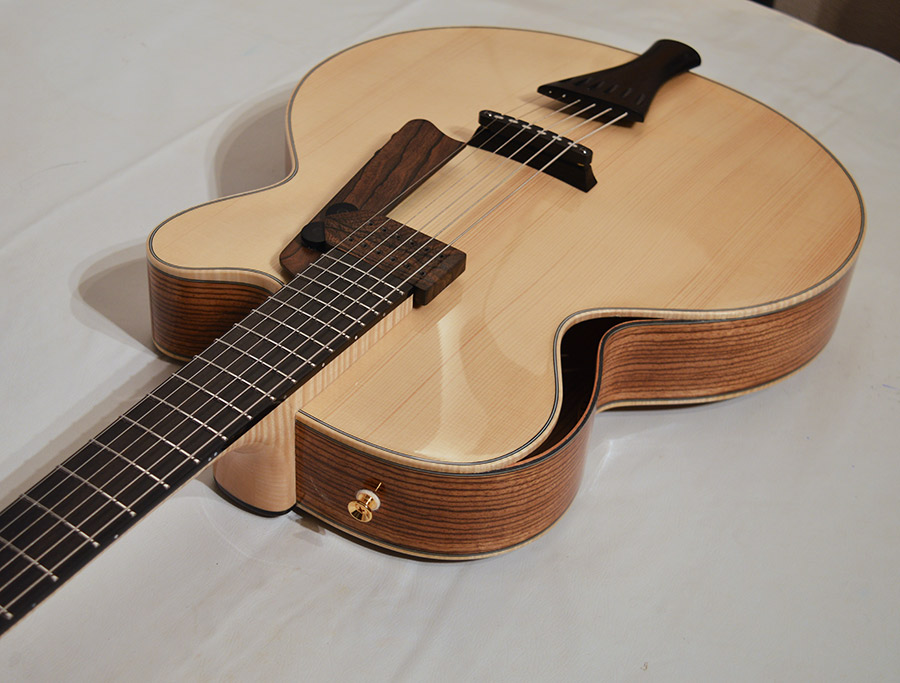
A detail of the pickup:
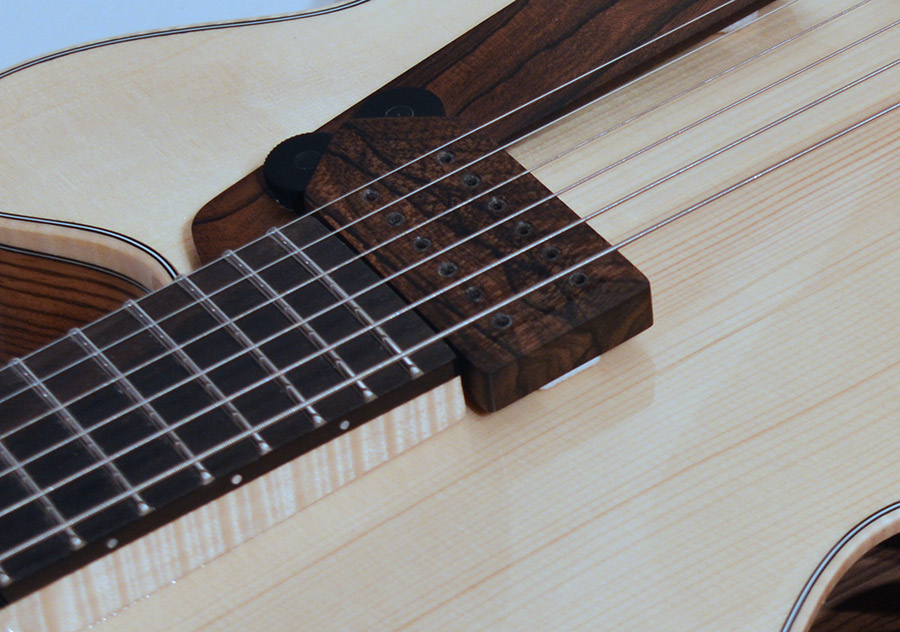
As you can see, this pickup is not the same as the one that I showed in that post. It is different in a very subtle way, and some might even think that it has some construction defect. Look at what’s written on the label:
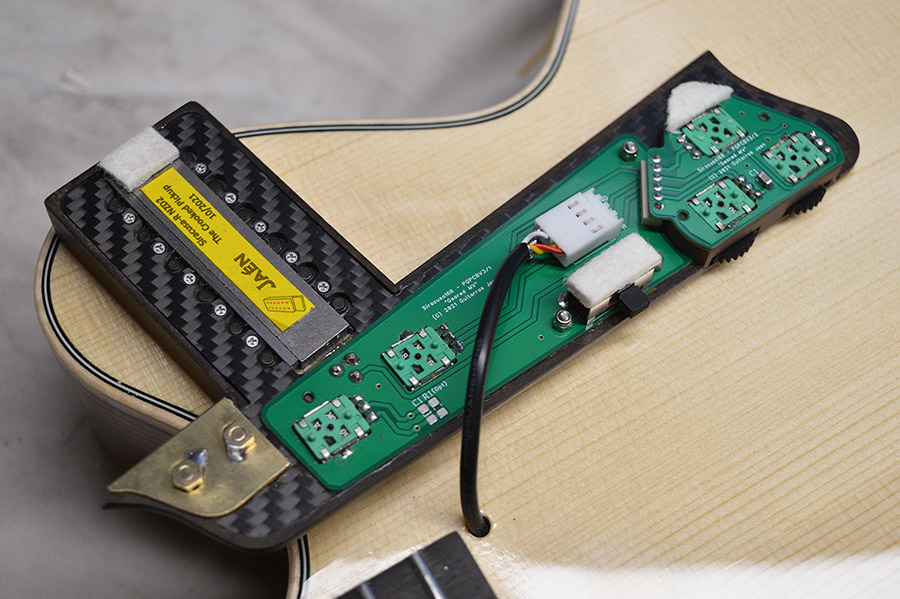
The Crooked Pickup? Well, that’s correct, but not due to some error—by design. This is the pickup as seen from the treble side:
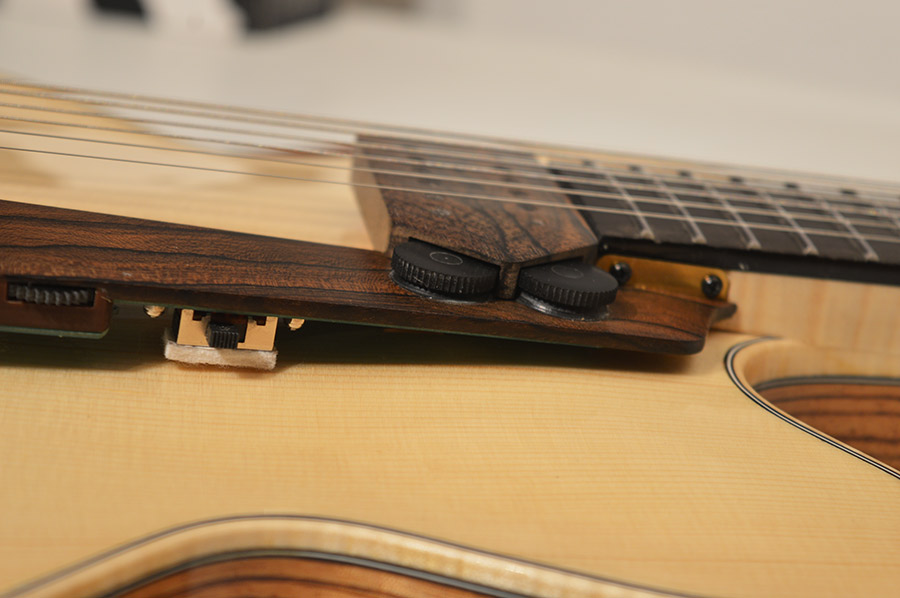
The surface that lies on the pickguard is slanted, so that the pickup makes a small angle with the pickguard. Apart from that, it is 0.5 mm thinner than the previous versions (a modification that I have extended to all the line of Siracusa pickups). Half a millimeter is all I can shrink it without touching things that I don’t want to touch. It is not much, but that, added to the twisting, makes much more room for the unconventional mechanisms below the pickguard. Notice also that the potentiometers below the pickup are at different heights, the one at the right being on a taller post.
Let me say something more about the guitar. The Siracusa 16R, as I said in my previous post, has a single pickup at the neck position and a piezo built inside the bridge. These two pickups are kept independent, so that they can be equalized and amplified separately. Having a master volume in this case is a must, and making it slim is the reason for the geared construction that I explained.
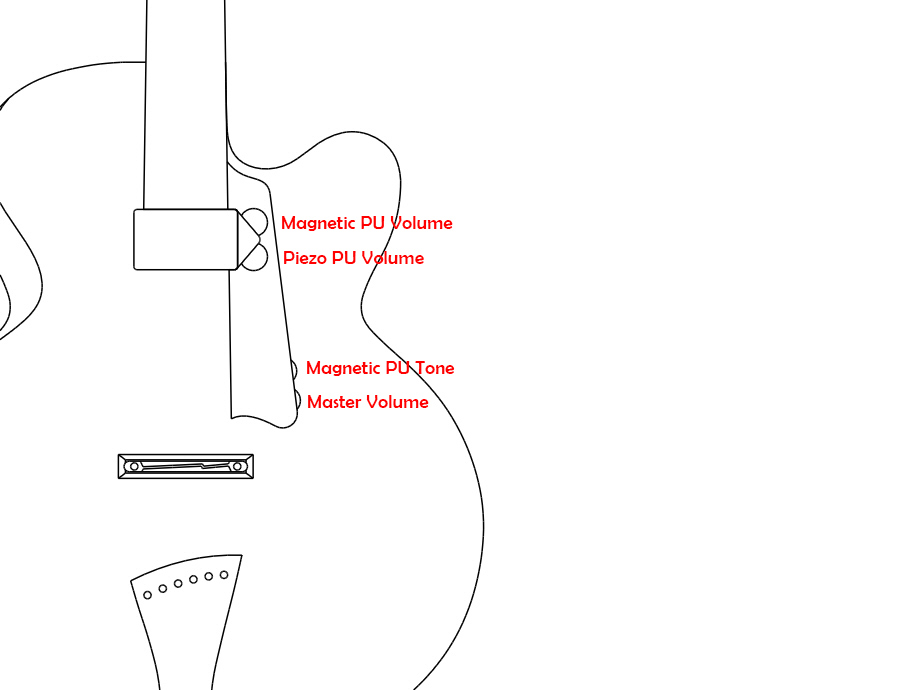
How does this work? First, you should adjust the equalization, effects and amplification of each source, independently. For example, you can connect the output of the magnetic pickup to an electric guitar amplifier, and the piezo output to an acoustic guitar amplifier. Or, alternatively, connect them to different inputs on a real two-channel amp, for example some model from AER or Acoustic Image. Once that’s done, we should adjust the blend with the two volume controls located below the pickup. When we are satisfied, we’ll use the master volume exclusively, as if it was one of those archtops that have the volume and tone controls below the pickguard. A simple idea, as you see. Here you will find the manual, that explains this and some other things, mainly those related to using the two available jacks.

